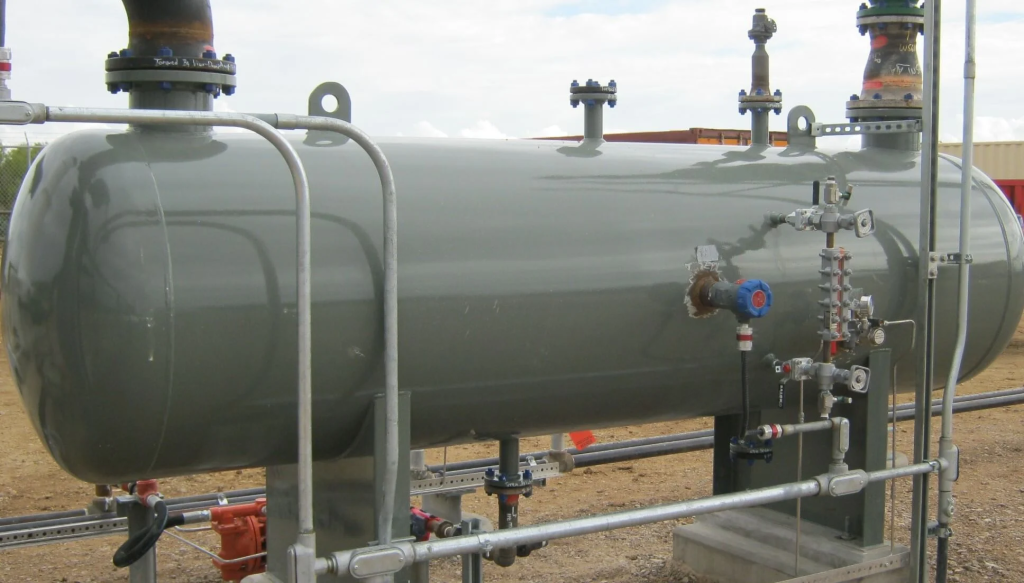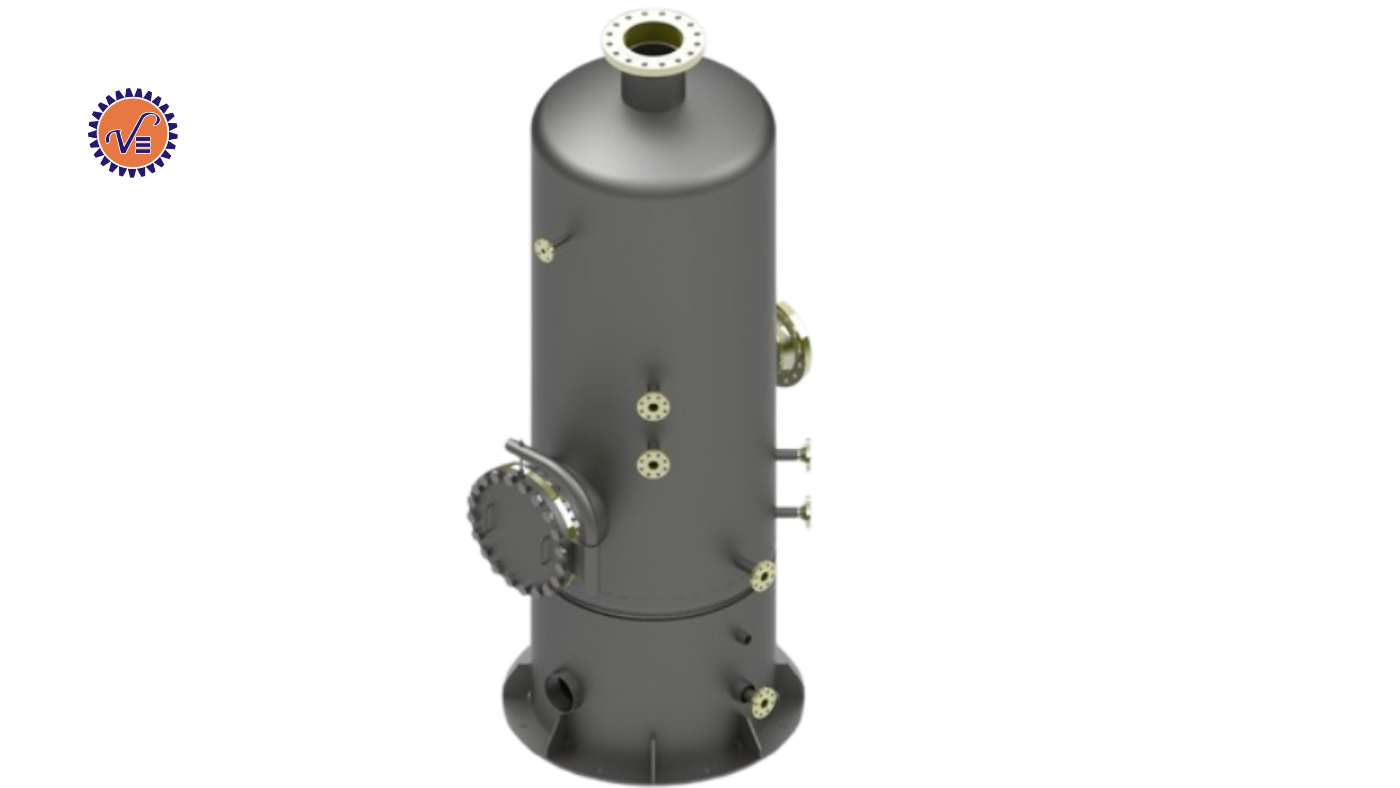Ever wondered how factories keep the air clean despite all the fumes they produce? Gas scrubber vessels play a huge role in that. These aren’t just fancy tanks; they’re essential pieces of equipment that trap harmful pollutants from industrial exhausts. Picture a massive filter system sucking up bad stuff like sulfur or dust before it hits the sky. This guide from Varun Engineering breaks it all down in straightforward terms, chatting about what these scrubbers are, how they operate, and where they fit in various industries. Stick around for tips, examples, and even some future trends to get the full picture.
Understanding Gas Scrubber Vessels Basics
The gas scrubber vessels may be analogized as the lungs of an industrial plant. As the flue gas given out by processes like coal-burning or oil-refining contains obnoxious particles and impurities of gaseous nature, in the absence of scrubbers, those pollutants would freely disperse and pollute the environment by way of smog or acid rain. The scrubbers go on to cleanse that dirty gas by mixing it with a cleaning agent, either liquid or dry, which holds onto those pollutants. In consequence, clean emissions fit for meeting stringent environmental laws are generated. Often, a knock out drum is incorporated upstream to take out larger liquid droplets in the incoming gas stream for the purpose of making it easier for the scrubber.
The Need for Gas Scrubbers in Modern Industry
Pollution is not merely a trendy term in environmentalism; it damages health and ecosystems. The industries vent gases like sulfur dioxide, which aggravates respiratory problems, or nitrogen oxides that contribute to the formation of ozone at ground level. Washers stand right on them, pulling the pollutants from the exhaust streams. In many installations, a knockout drums is installed upstream of the gas scrubber for the separation of entrained liquid to avoid overloading the gas scrubber and to make sure the pollutant capture is being effected properly.
Breaking Down How Gas Scrubbers Function
The process starts when polluted gas enters the scrubber through an inlet. Inside, it encounters a scrubbing medium. In wet systems, sprays of water or chemicals rain down, capturing particles as they collide. The dirty liquid collects at the bottom, while clean gas exits the top.
Dry scrubbers work differently, injecting powders like lime that react with gases to form solids. These solids get filtered out, leaving purified air. Efficiency depends on factors like gas flow rate and contact time. Advanced designs use baffles or packing to boost interaction.
Exploring Different Types of Gas Scrubbers
Variety is key because no two industries face the same pollutants. Let’s look at the main categories.
Wet Scrubbers in Detail
Wet scrubbers dominate where soluble gases need removal. The gas bubbles through or gets sprayed with liquid, often water mixed with alkalis for acids. Droplets trap dust and absorb gases like HCl or SO2. Incorporating a knock out drum in the system helps manage excess liquid entrainment, making the process more reliable for continuous operation.
Open-loop versions use fresh water, discharging used liquid after treatment. Closed-loop recycle the liquid, adding chemicals as needed. Hybrid combine both for flexibility.
In marine settings, like on ships, wet scrubbers clean exhaust from heavy fuel oil, complying with IMO sulfur caps. Seawater often serves as the medium, neutralizing acids naturally.
Dry Scrubbers Explained
Dry scrubbers shine in water-scarce areas. They use sorbents like activated carbon or lime injected into the gas stream. Reactions form dry byproducts collected via filters.
These are great for high-temperature gases, avoiding evaporation issues. However, they might not handle sticky particles as well as wet ones.
Venturi Scrubbers for Fine Particles
Venturi scrubbers accelerate gas through a narrow throat, creating high-velocity mixing with liquid. This turbulence captures tiny particles down to microns.
They’re energy-intensive but excellent for submicron dust in metal smelting or pharma.
Packed Bed Scrubbers for Gas Absorption
Packed beds fill a tower with random or structured packing, increasing surface area. Gas flows up, liquid down, maximizing contact for absorption.
Ideal for VOCs or ammonia in chemical processing.
Spray Tower Scrubbers
Spray towers are simple: gas rises through falling sprays. Good for coarse particles but less for fine ones.
Often used in flue gas desulfurization with limestone slurry.
Electrostatic Precipitators as Companions
Though not pure scrubbers, ESPs charge particles electrically, collecting them on plates. Often paired with scrubbers for comprehensive cleaning.
In coal plants, ESPs handle dust before scrubbers tackle gases.
Essential Parts That Make Scrubbers Tick
A scrubber’s heart is its chamber, but supporting components are crucial.
Inlets direct gas flow evenly. Scrubbing zones vary by type. Outlets include demisters to catch moisture.
Wide-Ranging Industrial Uses
Scrubbers adapt to many sectors, each with unique demands.
Oil and Gas Sector
Refineries deal with H2S and VOCs. Scrubbers remove them, preventing flares from polluting.
In natural gas processing, amine scrubbers strip CO2 and H2S.
Power Generation Plants
Coal plants use FGD scrubbers with limestone to cut SO2 by 95%.
Gas-fired ones target NOx.
Byproducts like gypsum get reused in wallboard.
Chemical Production Facilities
Acids, solvents, and odors need control. Packed beds absorb fumes efficiently.
Fertilizer plants scrub ammonia with acid solutions.
Mining and Cement Operations
Dust-heavy environments favor dry scrubbers for SO2 and particulates.
Mines use them for ventilation air cleaning.
Pharmaceutical and Biotech
Fine powders and solvents require Venturi or HEPA-integrated scrubbers.
Cleanrooms demand ultra-low emissions.
Food Processing and Waste Management
Odor control in rendering plants uses chemical scrubbers.
Incinerators scrub dioxins and HCl.
Maritime and Shipping
Ships install EGCS to clean bunker fuel exhaust.
Open-loop use seawater, closed-loop treat and recycle.
Metal Finishing and Semiconductor
Plating shops scrub chrome mists; chip fabs handle HF.

Advantages That Make Scrubbers Worth It
- High removal rates, up to 99% for some pollutants.
- Flexibility in handling mixed streams.
- Energy recovery in some designs, like heat from hot gases.
- Byproduct value, reducing net costs.
- Compliance assurance, avoiding penalties.
Facing the Hurdles Head-On
- Corrosion from acids eats at materials; regular checks needed.
- Water use in wet systems strains resources; recycling helps.
- Waste disposal: sludge or washwater requires treatment.
- Installation space and retrofits challenge older plants.
- High initial costs, though payback comes via savings.
What Sets Varun Engineering Apart
- Tailored engineering for exact needs.
- Use of cutting-edge simulations for design.
- Comprehensive service from install to upkeep.
- Commitment to sustainability, like low-energy models.
- Proven track record in diverse industries.
Selecting the Perfect Scrubber
- Assess pollutants first.
- Factor in space, water availability.
- Budget for ops and maintenance.
- Consult experts like Varun Engineering for simulations.
- Test pilots if possible.
Looking Ahead: Innovations in Scrubbing
- Smarter sensors for real-time adjustments.
- Membrane tech for better separation.
- Carbon capture integrations for climate goals.
- Varun Engineering pioneers hybrid systems combining wet/dry for versatility.
- Reuse of captured CO2 in fuels or chemicals points to a circular future.
Wrapping It Up
Gas scrubber vessels keep industries humming while safeguarding the air. From wet to dry, Venturi to packed, they adapt to needs across sectors. Benefits outweigh challenges when designed right. Varun Engineering stands ready with expertise to implement top-notch solutions. Questions on fitting one to operations? Contact Varun Engineering for guidance.


